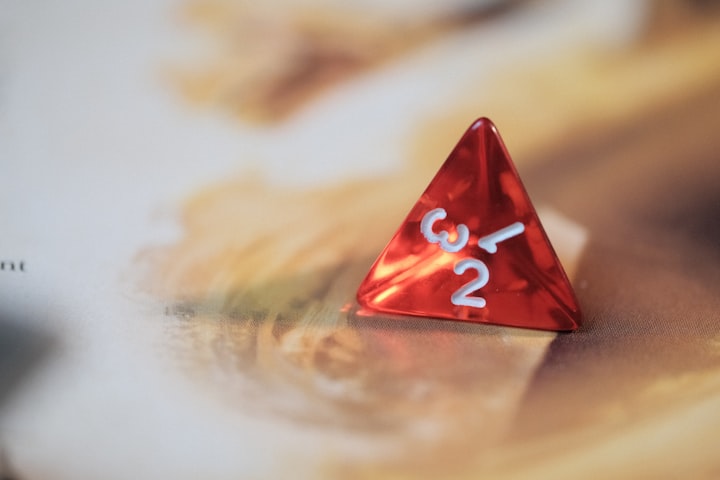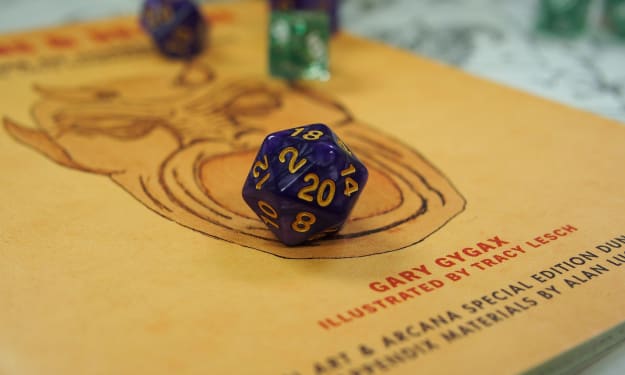How to Start Playing Dungeons and Dragons (D&D) 5e
This Article is a Quick Overview for Those Interested in Playing D&D That Aren't Sure Where to Start.

If you know nothing at all about Dungeons and Dragons (referred to as D&D from here on), then I always suggest starting by watching some liveplay videos or streams. Many of these have professional level production value and props, so be sure not to get hooked into expecting this same level from your own Dungeon Master (DM). Look up Critical Role, Dimension 20 or High Rollers on Youtube for the best streams online right now.
What to Buy:
Once you have a feel for what exactly the game is, you might decide you want to purchase some of the products and read them over. I suggest starting with the D&D Starter Set or the D&D Essentials Kit. These two starter sets include the basic rules, maps, dice and storylines that will run you through some basic adventures. These adventures are a good beginning point, and have information to bring you forward into a bigger adventure going forward. If you don’t want to run pre-generated adventures and want to immediately take the step into making your own adventures, look ahead to the Core Books section.
Looking for Group:
D&D is a social game! You can play D&D with a single DM and one player, but most games have 3-5 players, and some get larger. My personal favorite number is 5, I find any more players and the game can slow down significantly. But if you watch Critical Role you’ll see that Matthew Mercer runs 7 players quite handily. Finding a D&D group and keeping it together might be one of the hardest parts of running a game, as is much of adult life. But, get out there and ask your friends, check in at local game shops or find local Facebook pages for players and games.
Core Books:
If you want to skip the starter sets and get right into making your own game, or if you want to learn a bit more about the rules and have more options, you’re going to need the Core Books. Truthfully, most groups only need the Player's Handbook to run the entire game. But, having the Monster Manual will help the DM throw excellent baddies at the group during the course of your adventures. The Dungeon Master's Guide has a lot of rules information, story writing, adventure building and campaign guiding information to it. It is a useful book, but technically you don’t actually need it to run the game. Nevertheless, it has a wealth of information and I suggest picking it up unless you have a good handle on how to produce your own story.
Other Tools:
There are a few other things that are quite handy to have at the table with you, the first of which are dice. Every player should have at least one set of Polyhedral dice, and the DM should have a few. You’ll need a four sided die, six sided, eight sided, ten sided, twelve sided, and twenty sided. Referred to often in order as a d4, d6, d8, d10, d12 and d20. In addition, getting a battle mat with a grid can be very very useful for combat, but isn’t needed. This also applies to tokens and miniatures. Combat will look cooler and be easier with the ability to see different monsters, but piling up minis can be quite expensive. Feel free to use any tokens you have!
First Time Tips:
Every game of D&D is going to be different, and if you are a new DM read my other article How to Dungeon Master (DM) for New Dungeons and Dragons (D&D) Players for extra information. Here are some tips that can help in a speedy manner.
- The Players Guide the Story: As a DM you make a lot of the world, the NPCs, the adventures, etc. But at the end of the day, the players get to make the decisions and most of the rolls to see what actually happens. Try your best not to pre-plan everything and force it to go in a certain direction, and instead create possibilities and avenues for your players to explore.
- Build Encounters: This follows up on preplanning, create an encounter where there is no expected outcome and simply see what the players do, they’ll often surprise you. Some DMs go as far as creating adventures where they don’t even know what the correct response is, simply responding to what their players do in a quick improvisation.
- Story Trumps All: Try not to get bogged down in all the rules and math in D&D, because there is a lot. At the end of the day, the story is going to be what matters above all, and is what is remembered.
- Play Short-Term, Think Long-Term: Try not to get caught up in the next thing at the table, but when you plan your next session, drop hints for the future, foreshadowing the next villain can be a lot of fun when it all comes together.
- Keep it Simple: Your D&D Game will become plenty complicated all on its own. All great stories do! It’s okay if your game starts simple and you don’t need to go over the top or crazy in-depth when you make your world. Start small and work your way through.
And that’s it! Get out there and have some fun!
About the Creator
Theo James Taylor
Writer, MCU lover, and HUGE RPG nerd (but especially D&D). I have been a ghostwriter for blogs and other publications for 5 years now, but love the freedom Vocal gives me. You can find me DMing an outrageous Homebrew Campaign every Monday!






Comments
There are no comments for this story
Be the first to respond and start the conversation.